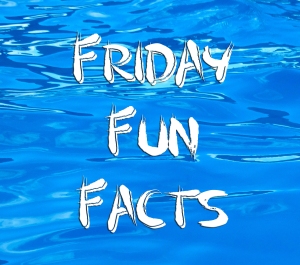
There are 354 Old Testament prophecies regarding the birth of the coming King. Every single one of them was fulfilled in the birth of Jesus Christ.

There are 354 Old Testament prophecies regarding the birth of the coming King. Every single one of them was fulfilled in the birth of Jesus Christ.

So you think you know cartoons?
Well, if you’re a fresco painter, you do!
The word is actually quite old. A fresco painter – one who paints on wet plaster – uses a cartoon to plan his painting and mark the wet plaster before he ever picks up his brush. Plaster dries so quickly that he would never accomplish all he has to get done if he did not first create a handy dandy cartoon!

Navajo Code Talkers
You can imagine the necessity of secure communications during World War II. Codes were broken left and right – on all sides – and you didn’t always know if the message you’d just received was really from your own men or impostors.
And then the Navajo Code Talkers entered the picture. The Navajo language is so unique that the enemy never stood a chance of breaking the radio code they’d based on their native tongue.
Kee Etsicitty, one of these great men, passed away last month at the age of 92.

Texas Trivia
You thought Texas was all about horses, right?
Okay, so we’re a LOT about horses, and I have several friends who own them, but we are also about…
Compaq – calls us home
Dell – calls us home
Wool – we produce more than any other state
Dr Pepper – invented in Waco (And there’s no period in Dr)
Waco Bridge – the US’ first suspension bridge
Armadillos and opossums – Can we say “road kill”?
Bats – Yep, we’ve got more species than you’d want to shake a stick at.
Roses – Ever visited Tyler?
Helium – as in a well thereof
Birds – Actually Baytown, my hometown, is BIG on the birders’ trail!
There’s more, of course, including the fact that central Texas is often referred to as the Silicon Valley of the South.
What about your state?




Most of you who live in regions that have more than two seasons love watching your trees’ leaves change color in the fall, but do you know why they change?
There is a whole science to it, of course, but the most basic explanation is that they really don’t “change” color so much as they lose color. The reds, golds, and purples are there all along; they’re just drowned in a wash of chlorophyll green. In the fall, when the tree stops producing chlorophyll and it all goes away, the glorious colors of fall are there to be seen!




Coin Reeding
You’ve probably noticed that some coins have jagged edges, but have you ever wondered why? This distinctive edge is called reeding, and though it may appear to be merely decorative it is actually historically significant.
In times past, coins were made from precious metals and people would steal money by shaving the edges off their coins before using them to pay for goods or services. To stop this practice, the government added reeding to the coins they struck, so that such tampering would be obvious.